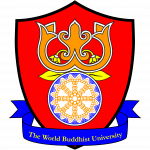
The Buddha
A thorough tour of the Pāli texts which report the Buddha’s character, accomplishments, life, and history.
Table of Contents
- Who was the Buddha?
- Prerequisites
- Course Materials
- Textbooks
- The Course
- Introduction
- Part 1: Becoming the Buddha
- Part 2: Establishing the Religion
- Epilogue: The Far Future
- Feedback
- Further Reading
- Advanced Courses
Who was the Buddha?
“Buddha” (properly speaking) refers, not to a single individual, but rather to a category of beings: those who have, through their own effort, attained complete enlightenment.
But, more typically, “the Buddha” refers to the Sakyan prince who, in the 5th century BCE Gangetic Plain, first rediscovered nibbāna and taught the way for attaining it.
Over 500 million people now worship the Buddha as their teacher, but the Buddha was no God. Indeed, it’s even said that a Buddha can only arise as a human—never as a deity (deva)— because only the human realm balances the misfortunes and mistakes of life which are necessary to motivate the practice, with the ease and discernment which allow it to ripen.
But while the Buddha was born a man, a man he did not remain. Through his superior striving and wisdom (over countless eons) he was able to transcend gender, caste, creed, identities, views, suffering, and even death itself and to teach others how to transcend themselves too. We call such a teacher, “Buddha.”
Prerequisites
If you’re looking for a quick and inspiring biography of the Buddha, I recommend The Biography of Shakyamuni Buddha by Master Hsing Yun. This course goes beyond the basics to reading the primary sources themselves, and therefore requires some comfort reading the Early Buddhist Texts.
